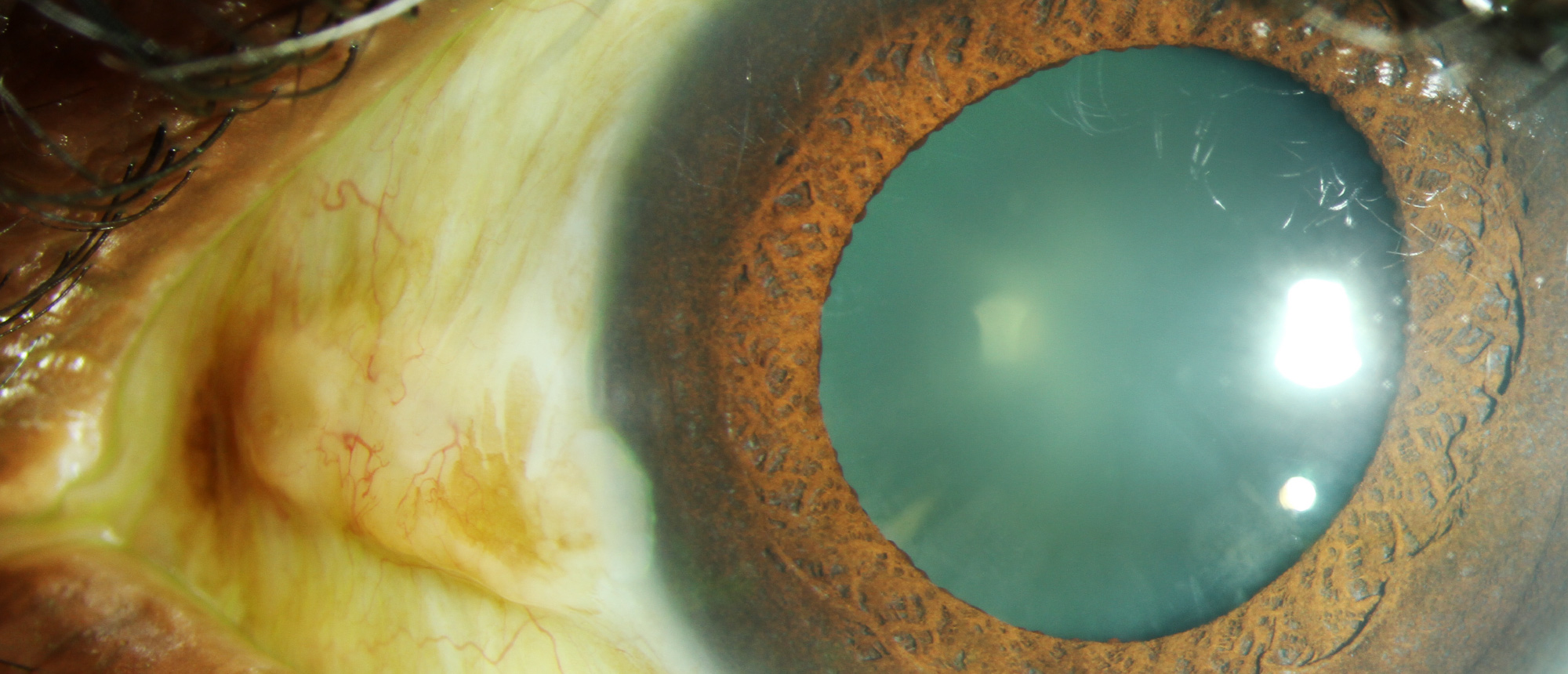Ocular Surface Squamous Neoplasia
A 65-year-old male with history of suspected glaucoma, diabetes, hypertension, and hyperlipidemia presented for a routine eye exam. Patient reported spending a lot of time in the sun. Visual acuity was 20/20 and intraocular pressure was normal in both eyes. Exam revealed bilateral nasal heaped pterygia and a gelatinous lesion extending into the cornea from the pterygium in the left eye. Anterior segment OCT showed thickened, hyperreflective epithelium with a sharp cutoff between normal and abnormal epithelium. This was concerning for OSSN and so incisional biopsy was undertaken, but histopathology showed only acanthotic epithelium consistent with pterygium. OSSN is the most common ocular surface malignancy. Its clinical features overlap with multiple other malignant and benign lesions and are not always reliable for diagnosis. Biopsy is currently the gold standard for diagnosis. Anterior segment OCT is a reliable adjunctive non-invasive diagnostic modality for OSSN, for which it is highly sensitive and specific. This case, however, shows that anterior segment OCT is still limited in certain cases and therefore biopsy is still necessary in most cases for diagnosis. New non-invasive diagnostic modalities that could help with the diagnosis of OSSN include OCT angiography, FA/ICG, and machine learning.
Presentation Date: 09/05/2019
Issue Date: 08/01/2020
Please log in or click on ENROLL ME to access this course.
